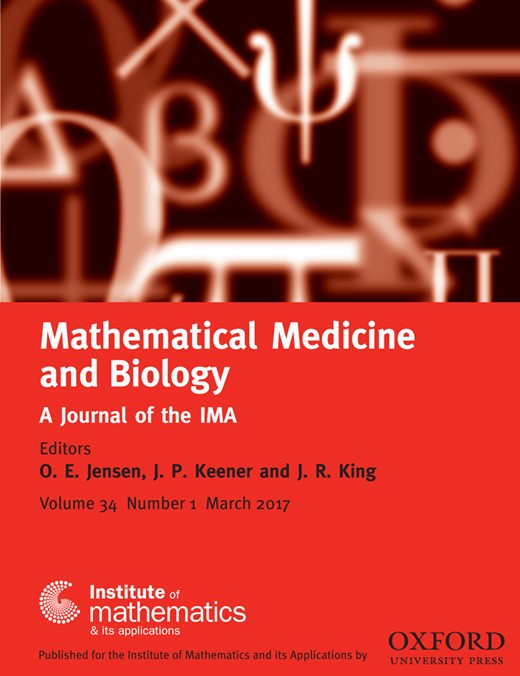-
Views
-
Cite
Cite
I. A. Kuznetsov, A. V. Kuznetsov, What mechanisms of tau protein transport could be responsible for the inverted tau concentration gradient in degenerating axons?, Mathematical Medicine and Biology: A Journal of the IMA, Volume 34, Issue 1, March 2017, Pages 125–150, https://doi.org/10.1093/imammb/dqv041
Close - Share Icon Share
In tauopathies, such as Alzheimer's disease (AD), microtubule (MT)-associated protein tau detaches from MTs and aggregates, eventually forming insoluble neurofibrillary tangles. In a healthy axon, the tau concentration increases toward the axon terminal, but in a degenerating axon, the tau concentration gradient is inverted and the highest tau concentration is in the soma. In this article, we developed a mathematical model of tau transport in axons. We calibrated and tested the model by using published distributions of tau concentration and tau average velocity in a healthy axon. According to published research, the inverted tau concentration gradient may be one of the reasons leading to AD. We therefore used the model to investigate what modifications in tau transport can lead to the inverted tau concentration gradient. We investigated whether tau detachment from MTs due to tau hyperphosphorylation can cause the inverted tau concentration gradient. We found that the assumption that most tau molecules are detached from MTs does not consistently predict the inverted tau concentration gradient; the predicted tau distribution becomes more uniform if the axon length is increased. We then hypothesized that in degenerating axons some tau remains bound to MTs and participates in the component ‘a’ of slow axonal transport but that the rate of tau reversals from anterograde to retrograde motion increases. We demonstrated that this hypothesis results in a tau distribution where the tau concentration has its maximum value at the axon hillock and its minimum value at the axon terminal, in agreement with what is observed in AD. Our results thus suggest that defects in active transport of tau may be a contributing factor to the onset of neural degeneration.





